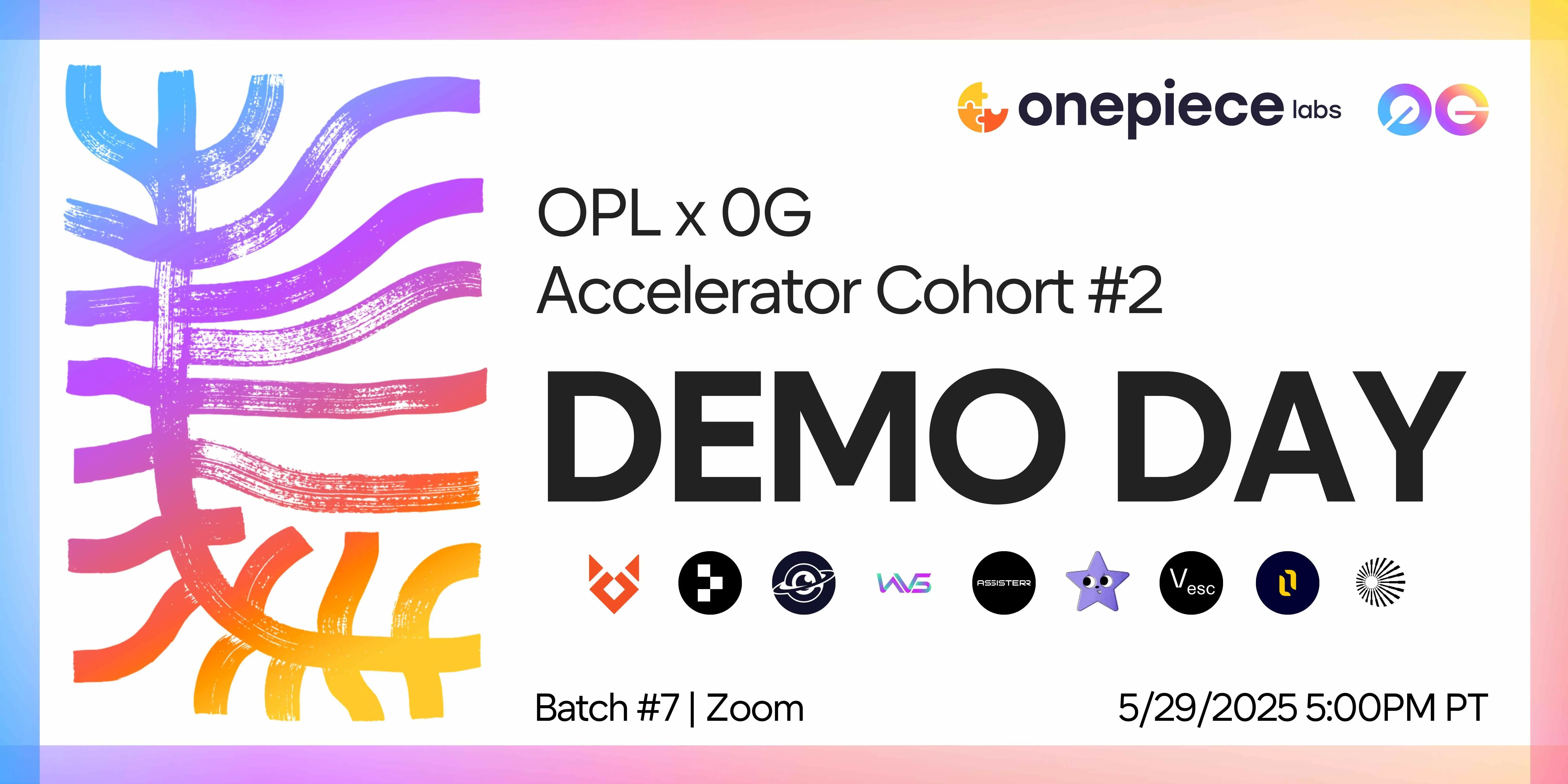LongHash Ventures: Why We Invested in Zero Gravity (0G)?
Author: LongHash Ventures
How the Ethereum Roadmap Relates to the First Modular AI Chain
Cryptocurrency is on the brink of a significant leap. For the first time in history, high-performance applications can exist on the blockchain: including artificial intelligence, gaming, and order books. In particular, at the intersection of AI and Web3, providing scalable infrastructure to meet the performance demands of the most demanding AI applications is becoming increasingly important.
Sam Altman from Worldcoin once stated at a private gathering, "One of Worldcoin's missions is to ensure that artificial intelligence is always aligned with human interests." Sixty years ago, Isaac Asimov proclaimed, "Science is moving faster than society can handle its wisdom."
Placing AI models on-chain is the best way to grow human intelligence, as AI gains unprecedented capabilities. Solving the performance requirements needed to achieve this feat, modularity is key.
Modularity is at the core of the Ethereum roadmap. This is for good reason. By breaking down a monolithic blockchain into three layers: consensus, execution, and DA (data availability), each layer can scale independently while maintaining composability.
"Zero Gravity is essentially a new type of DA modular chain that inherits security from Ethereum as a proven sovereign L1 and discovers practical value as a modular AI chain."
Similar to how the Ethereum Foundation adjusted from full sharding to a Rollup-based architecture, we believe that Ethereum's DA layer will evolve into multiple modular DA chains. Zero Gravity is pioneering the default DA chain for high-performance execution environments.
The Current State of Data Availability
The data availability space has always been a crucial component of Ethereum's Rollup-based roadmap, as Vitalik mentioned in his recent blog. The recently implemented Dencun upgrade enabled EIP4844. EIP4844 allows a special area in blocks to store data required by Rollups and lays the foundational framework for future implementation of DAS (data availability sampling). However, the design of EIP4844 itself limits each blob space to 384kb (approximately 0.083Mbps) per blob, can only persist data for 4096 periods (about 18 days), and has not yet provided DAS proofs. It can be argued that 4844 and full danksharding are not the ultimate goals of DA. We believe the Ethereum Foundation will embrace Rollup-based DA architecture just like the execution layer.
Celestia, EigenDA, and Avail have also made significant progress at the DA layer. However, the growth in the number of L2s and decentralized AI applications requires higher performance and more comprehensive DA solutions. Current solutions ensure data availability, but rapid data retrieval is currently not feasible, limiting the range of applications that can be built. Innovations at the execution layer, such as parallel processing, can support significantly higher orders of magnitude in transactions per second. However, the DA layer should be able to propagate more data to nodes per second to reach consensus and ensure data availability. Since EigenDA is not a blockchain but a set of smart contracts running on Ethereum, it inherits the same finality time as Ethereum, which is 12 to 15 minutes. When using fraud-proof-based methods like those in Celestia, DA verification may take time. Please see the complete comparison chart below.
How Zero Gravity Addresses DA Pain Points
Zero Gravity is building the highest performance, scalable, and secure data availability solution. Unlike injecting entire data blocks into the consensus system and storing them on full nodes, 0G is building the data availability layer directly on top of a distributed storage system that supports various data types (including transactions, key-value pairs, blobs (text, images, audio, files), and metadata logs).
Performance:
Zero Gravity's data availability layer and data storage layer have different consensus networks. This separation allows the heavy lifting of data transmission to occur internally within the storage layer, achieving horizontal scaling through strategic partitioning. To ensure data is reliably available, consensus on data availability sampling (DAS) is reached through a majority of validators.
Parallelized block production further enhances performance. To reduce the constraints imposed by authentication storage access, 0G uses a novel data structure instead of MPT (Merkle Patricia Tree).
Security:
To ensure the highest level of security, the validity of the erasure coding used by 0G is proven on Ethereum through validity proofs and KZG commitments. 0G has its own consensus mechanism, with blocks stored on 0G and verified on Ethereum L1. The KZG ceremony for Ethereum took place in 2023, receiving 141,416 contributions, allowing EIP 4844 to be implemented in the Dencun upgrade and paving the way for future Danksharding. By using the same "tau power" as the Ethereum KZG ceremony, 0G achieves a match in robustness with Ethereum's KZG, giving it a significant advantage over competing DA solutions.
Fundamentally, 0G is an L1 that can be verified on Ethereum L1, with its own consensus mechanism and data storage layer. This unprecedented architecture is unique at the DA layer and allows 0G to scale DA through Layer2s, just as Ethereum has scaled its execution capabilities through Layer2s.
Through these architectural innovations, 0G significantly reduces storage and retrieval costs while providing the highest data propagation speeds without compromising security.
Modular AI Chain
By combining speed and cost-effectiveness, 0G is well-positioned to become the infrastructure layer for a thriving ecosystem of advanced high-performance AI applications on-chain. Currently, 0G has announced partnerships with Modulus Labs and Ora Chain, with more partners to be revealed soon.
Aiming to democratize access to AI technology and foster a more collaborative AI development environment, 0G provides high-throughput data storage and retrieval capabilities. This capability allows large language models (LLMs), metadata, and training data to be stored on-chain. Additionally, large inference tracking can be stored on-chain, enabling on-chain applications to handle inference requests. Developers will be able to add machine learning capabilities to existing smart contracts, making them more autonomous and capable of making decisions based on real-time on-chain data. While it is still early to fully foresee the range of advantages and capabilities unlocked by moving the AI stack to an on-chain environment, the potential it holds is undoubtedly exciting.
0G not only addresses most pain points for AI applications but also supports the growing number of L2s, application chains, and the most demanding high-performance applications, such as data markets, RWA applications, on-chain gaming, high-frequency DeFi, on-chain order books, and more.
Building This Ideal Startup Team
We first met Michael in the BASS (Stanford Business School Big Data) course at Stanford University, and we knew then that he was a one-in-a-million founder. He is not only a successful entrepreneur (YC top company) and a respected lecturer (at Stanford) but also embodies the ethos of Web3, welcoming the community to join in the limitless expansion. Michael's previous startup, Garten, aimed to improve people's lives by promoting health and well-being, ultimately becoming a top YCombinator company. Prior to that, Michael gained extensive experience at companies like Bain, Bridgewater, and Microsoft. Few founders have delved as deeply into Web2 and combined it with the ideals of Web3 as Michael has. Interestingly, Michael's nickname is "Kung Fu Panda" because he practiced kung fu at the Shaolin Temple. The community quickly turned it into a meme.
Ming and Fan are founding team members of Conflux, a permissionless public blockchain. Ming's research work covers topics including providing efficient authentication storage for blockchains to enhance throughput and accelerate read/write operations, abstracting the storage and access of application metadata, and supporting efficient scalable parallel neural network computation on graphs. He has published papers at top conferences in the field of computer systems, such as SOSP, OSDI, NSDI, ATC, EuroSys, SoCC, VLDB, etc., collaborating with researchers from institutions like Microsoft Research, Cornell University, Tel Aviv University, Peking University, and the University of Toronto. He also served as the publication chair for SOSP'17.
Led by Michael Heinrich and Ming Wu, the 0G team possesses deep expertise in technology, entrepreneurship, cryptography, and product development, and we believe they are the perfect team to build the first modular AI chain.
At Zero Gravity, the moon is the limit.
Every cycle, cryptocurrency evolves as if billions of years have passed. As native cryptonians, we have always yearned for broader applications of applications. Now that high-performance infrastructure is finally in place, we may see AI surviving on-chain, created by the people, governed by the people, and benefiting the people.
We are excited to collaborate with Michael, Ming, and the outstanding team at Zero Gravity to co-write the next chapter of high-performance infrastructure and applications.
LongHash Ventures is a crypto-native venture capital firm based in Singapore and Silicon Valley, founded in 2017. We invest in and partner with visionary founders who are pioneering the next phase of the open economy. Follow us at (x.com@LongHashVC) for the latest updates on Web 3.0 investments. (This article is authored by Roy and Raghav.)










